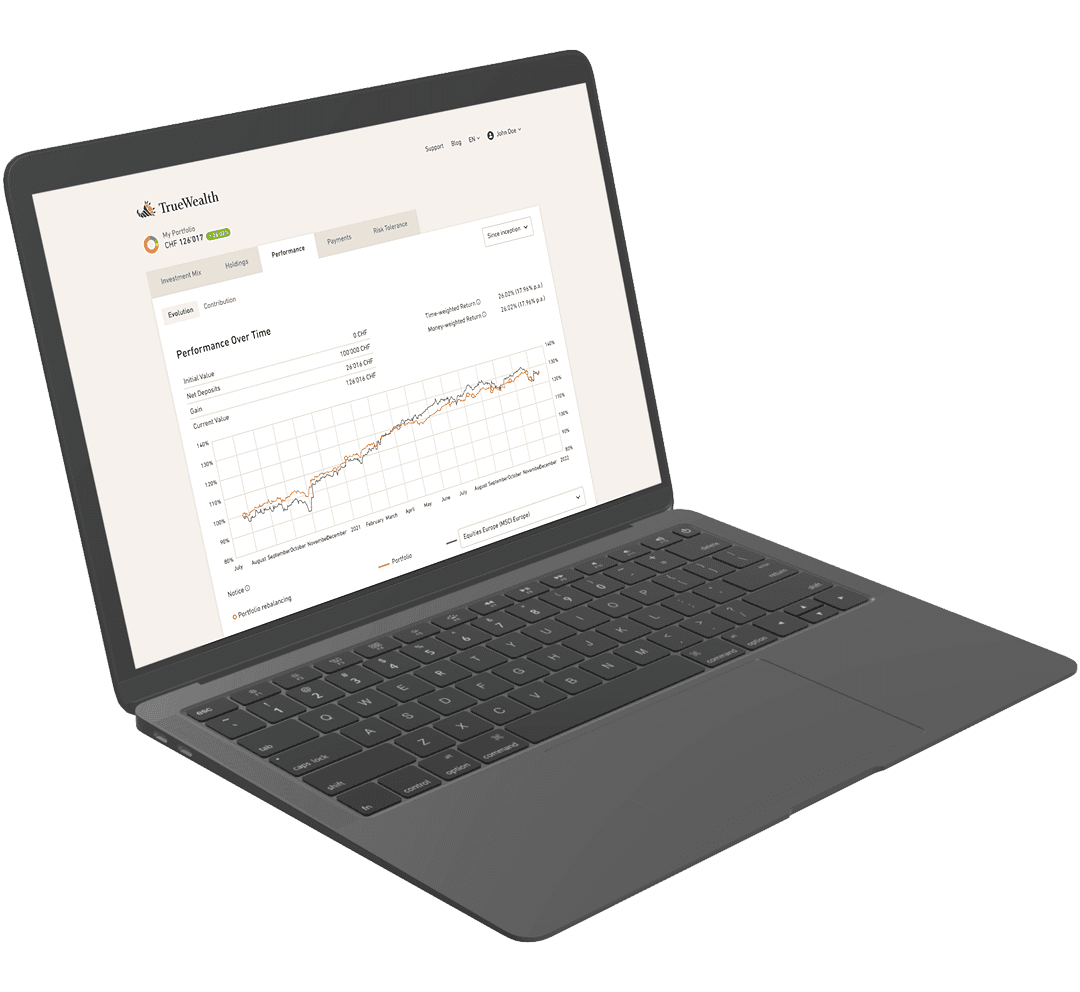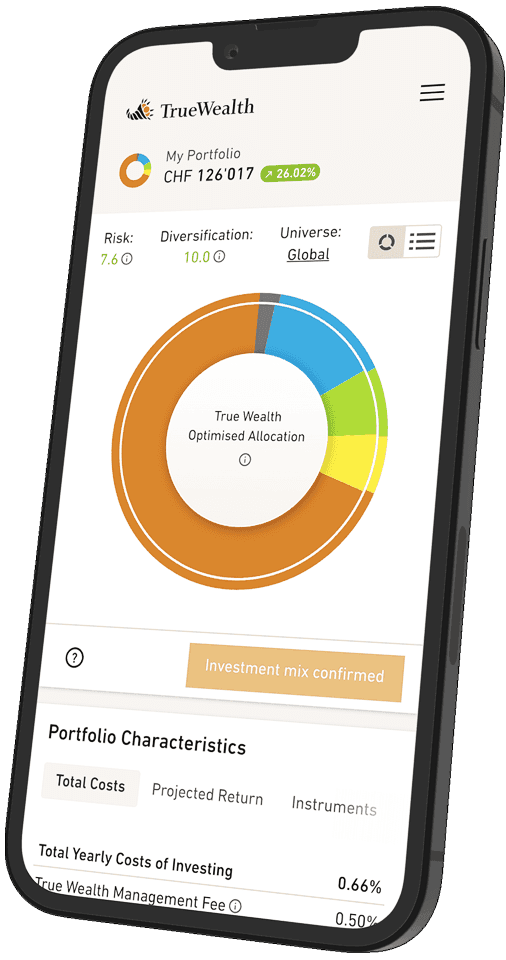Compound interest calculator
Calculate how your investments or savings will develop over time using our compound interest calculator.
CHF 0
Final capital
CHF 0
Deposits
CHF 0
Yield
Starting capital
10’000
CHFYearly Return
5%
3%
1%
0.5%
Individual rate
%
100
CHF20
YearsReading aid
If you begin with a starting capital of CHF 10’000, and consistently save CHF 100 each month, with your funds compounding at an annual interest rate of % over a period of 20 years, your total accumulated capital will be . This amount comprises in total deposits, which includes your initial investment and the sum of your monthly contributions, along with earned in interest.
Investments are always subject to a potential risk of loss, especially with a short-term investment horizon. The return on investments can vary greatly depending on the market environment and can also be negative under unfavourable market conditions.
What is compound interest?
Compound interest is a basic financial concept that involves the calculation of interest not only on the original amount invested, but also on the interest already accrued.
The influence of time on compound interest
The compound interest effect not only has a greater impact with higher and more frequent interest payments, but also with longer investment periods. The exponential dynamics of compound interest unfold particularly impressively over a period of years.
The decisive factor is, of course, the interest rate. At an interest rate of 0.5 percent, the effect may seem small. It would take several decades for the initial capital to double despite compound interest. With an interest rate of 5 percent, on the other hand, it takes less than 15 years for the capital to double.
How do you make the most of the compound interest effect?
As we have seen, the compound interest effect offers many advantages. To optimize the result, you should pay attention to the following points and use them wherever possible:
- Choose an investment option (if possible) that pays interest during the year rather than annually. The compound interest effect is enhanced by reinvesting the interest more frequently.
- Do not withdraw the interest, but leave it in the investment. This allows you to make the most of the compound interest effect.
- Start with a certain initial investment. The higher the starting balance, the greater the compound interest effect from the outset.
- Let time work for you. The longer (and therefore more often) a balance earns interest, the faster your assets will grow.
- Avoid high fees, because low costs directly benefit the return.
How do you calculate compound interest?
So if you have capital and patience, you can use the compound interest effect to increase your money without much effort. Simple mathematical formulas can be used to calculate how much compound interest will earn on your money over the years.

The formula for calculating the final amount with compound interest is:
FV = PV × (1 + ¹⁄₁₂R)^(T×12)
where, with monthly interest calculation:
FV is the future value
PV is the present value,
r is the interest rate per period (return) and
t is the time in years
Expand your investment options with ETFs
While traditional savings accounts and fixed-income investments offer a degree of security, exchange-traded funds (ETFs) are an option for investors seeking higher long-term returns.
Combined with the compound interest effect, ETFs can help you build wealth in the best possible way. The majority of ETFs used by True Wealth are accumulating ETFs, i.e. the current income is already reinvested on the ETF side.
In the case of distributing ETFs, our rebalancing ensures that the income is invested in line with the investment strategy. This keeps your portfolio on track and makes optimum use of the compound interest effect.

Ready to invest?
Open accountNot sure how to start? Open a test account and upgrade to a full account later.
Open test account